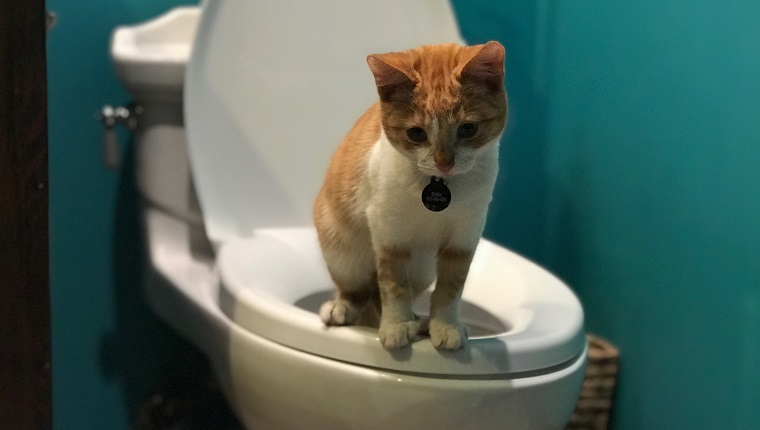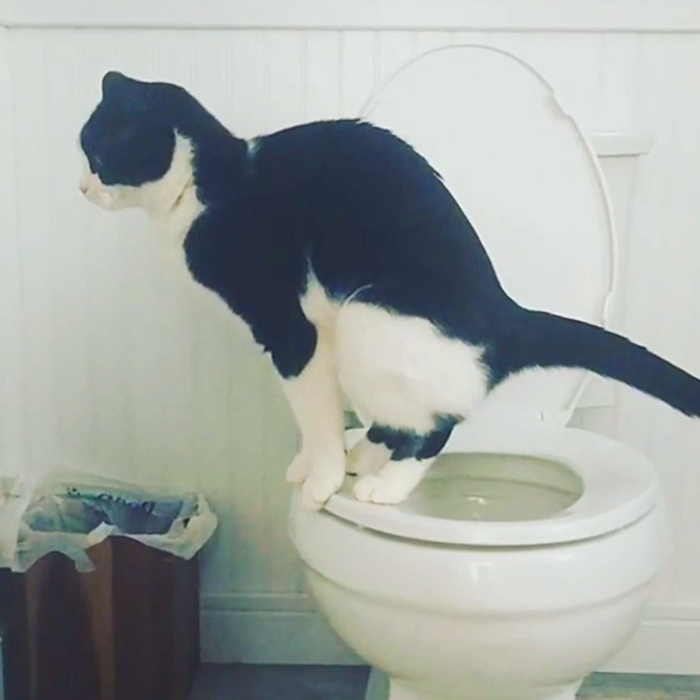Leading Reasons to Refrain from Flushing Animal Waste Down the Toilet
Get A Free EstimateThis great article listed below on the subject of Don't Flush Your Pets Poo Down The Loo, Vet Warns is relatively captivating. Don't miss out on it.

When it comes to throwing away waste, particularly animal waste, many individuals typically consider the convenient choice of flushing it down the commode. However, this relatively very easy solution can have major repercussions for the setting and public health. In this write-up, we'll discover why flushing pet waste down the toilet is a bad idea and provide alternate techniques for appropriate disposal.
Introduction
Appropriate garbage disposal is crucial for keeping environmental sustainability and public health. While it might seem harmless to flush animal waste down the commode, it can bring about different issues, both for the setting and human wellness.
Risks of flushing pet waste
Environmental influence
Flushing animal waste presents damaging bacteria and microorganisms right into waterways, which can negatively affect marine communities. These virus can contaminate water resources and harm marine life, interfering with fragile communities.
Public health worries
Pet waste has harmful bacteria such as E. coli and Salmonella, which can position severe wellness risks to humans. Flushing animal waste down the toilet can contaminate water supplies, leading to the spread of diseases and infections.
Alternatives to flushing
As opposed to purging animal waste down the commode, there are numerous alternative disposal methods that are extra eco-friendly and hygienic.
Composting
Composting animal waste is an eco-friendly means to dispose of it. By composting, raw material is broken down into nutrient-rich dirt, which can be made use of to fertilize yards and plants.
Land fill disposal
Taking care of animal waste in a land fill is one more alternative. While not as environmentally friendly as composting, it is a more secure alternative to flushing, as it avoids the contamination of water resources.
Animal garbage disposal systems
There are specialized animal garbage disposal systems offered that securely and hygienically deal with animal waste. These systems usually use enzymes to break down waste and get rid of smells.
Actions to correct animal waste disposal
To guarantee appropriate disposal of website pet waste, comply with these actions:
Scooping and bagging waste
Frequently scoop and bag animal waste using naturally degradable bags. This avoids waste from polluting the atmosphere.
Utilizing assigned waste containers
Dispose of bagged animal waste in assigned waste bins, such as compost containers or landfill containers. Stay clear of flushing it down the commode in all prices.
Cleaning up litter boxes and pet locations regularly
Regularly tidy litter boxes and pet dog areas to stop the accumulation of waste and bacteria. Usage pet-safe cleaning items to maintain health.
Benefits of correct disposal methods
Taking on appropriate disposal methods for animal waste supplies a number of advantages:
Reduced environmental pollution
Appropriate disposal approaches decrease the threat of environmental pollution, safeguarding waterways and ecological communities from contamination
Decreased risk of water contamination.
By avoiding flushing animal waste down the commode, the threat of water contamination is significantly decreased, securing public health.
Boosted sanitation and hygiene
Proper disposal techniques advertise far better hygiene and health, creating a much safer setting for both humans and animals.
Verdict
Finally, purging pet waste down the toilet is dangerous to the setting and public health. By embracing alternate disposal methods and adhering to correct waste administration techniques, we can minimize the adverse effect of pet waste and add to a cleaner, healthier earth.
What To Do With Dog Poo – The Do's And Don'ts Of Disposing Of Faeces
Dog poo bins
Some councils provide dedicated dog waste bins in popular dog-walking areas that can take dog poo that has been bagged but you can legally dispose of dog waste in any public litter bin, as long as it is securely bagged. This also applies to your wheelie bin at home.
Do not flush
Water companies do not recommend flushing dog faeces down the toilet because certain parasites can survive the water processing treatment and are potentially harmful to humans. You should also never consider flushing dog poo that has been bagged down the toilet as the bags will not break down and instead create severe blockages in the sewage system.
In the woods
The Forestry Commission promotes a ‘stick and flick’ method for dealing with waste in the woods. This means finding a stick and using it to flick any poo from off the path so that it is out of the way of other walkers. You could also bury it as long as it is not in an area where there might be livestock.
Livestock
Parasites found in dog poo can be transmitted to livestock if they inadvertently eat infected faeces that has been left on grazing land. This could result in the death of sheep or abortion in cattle so you should always make sure you pick up your dog’s waste in fields where livestock could be present.

Regularly tidy litter boxes and pet dog areas to stop the accumulation of waste and bacteria. Usage pet-safe cleaning items to maintain health.
Benefits of correct disposal methods
Taking on appropriate disposal methods for animal waste supplies a number of advantages:
Reduced environmental pollution
Appropriate disposal approaches decrease the threat of environmental pollution, safeguarding waterways and ecological communities from contamination
Decreased risk of water contamination.
By avoiding flushing animal waste down the commode, the threat of water contamination is significantly decreased, securing public health.
Boosted sanitation and hygiene
Proper disposal techniques advertise far better hygiene and health, creating a much safer setting for both humans and animals.
Verdict
Finally, purging pet waste down the toilet is dangerous to the setting and public health. By embracing alternate disposal methods and adhering to correct waste administration techniques, we can minimize the adverse effect of pet waste and add to a cleaner, healthier earth.
What To Do With Dog Poo – The Do's And Don'ts Of Disposing Of Faeces
Dog poo bins
Some councils provide dedicated dog waste bins in popular dog-walking areas that can take dog poo that has been bagged but you can legally dispose of dog waste in any public litter bin, as long as it is securely bagged. This also applies to your wheelie bin at home.
Do not flush
Water companies do not recommend flushing dog faeces down the toilet because certain parasites can survive the water processing treatment and are potentially harmful to humans. You should also never consider flushing dog poo that has been bagged down the toilet as the bags will not break down and instead create severe blockages in the sewage system.
In the woods
The Forestry Commission promotes a ‘stick and flick’ method for dealing with waste in the woods. This means finding a stick and using it to flick any poo from off the path so that it is out of the way of other walkers. You could also bury it as long as it is not in an area where there might be livestock.
Livestock
Parasites found in dog poo can be transmitted to livestock if they inadvertently eat infected faeces that has been left on grazing land. This could result in the death of sheep or abortion in cattle so you should always make sure you pick up your dog’s waste in fields where livestock could be present.

Do you really like reading up on Can You Flush Dog and Cat Poo Down the Toilet?? Make a remark below. We will be glad to see your feelings about this blog posting. We are looking forward that you visit us again soon. Do you know about another person who is truly interested in the subject? Be sure promote it. Thanks a bunch for being here. Revisit us soon.
Click Here!